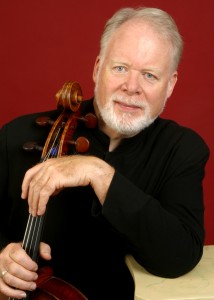BYU PHILHARMONIC, LYNN HARRELL, CELLO, Abravanel Hall, March 18
Lynn Harrell is one of today’s preeminent cellists. The BYU Philharmonic and Kory Katseanes were fortunate to snag him for their spring concert this week for two performances: Tuesday in de Jong Concert Hall at Brigham Young University and Wednesday in Abravanel Hall as the opening concert of the American String Teachers Association conference being held this week in Salt Lake City.

Lynn Harrell (Photo Credit: Christian Steiner)
Katseanes requested the Dvorak B Minor Concerto, a work that Harrell has estimated he’s played around 300 times in his long and illustrious career.
At Wednesday’s performance one wouldn’t have imagined that Harrell has played it so much, because he brought a fresh and dynamic approach to the work. There was fire and romantic passion in his playing, but also finely crafted lyricism and deeply felt emotion. It was a wonderfully conceived and expressed account that put the 71-year-old cellist’s prodigious technique and refined musicality on full display.
The Adagio was especially well played by both the soloist and the ensemble. The tender lyricism and deeply rooted emotions of the music were given a beautifully shaped and eloquent treatment that captured its emotional power. Harrell explored every nuance and gave a highly personal reading that was poetic in content.
And that was mirrored in the orchestra’s playing as well. Katseanes elicited super refined playing from his musicians that complemented Harrell’s. Together they helped define the textured expressiveness that Dvorak so masterfully crafts in this movement.
Harrell also played two encores: a delightfully lyrical reading of one of Schubert’s Moments musicaux (in F minor, op. 94, no. 3), and a dreamy account of Chopin’s Nocturne in E flat major, op. 9, no. 2.
While the spotlight was solidly on Harrell in the second half of the program, the first half focused on the philharmonic in two orchestral showpieces: the overture to Berlioz’s opera Benvenuto Cellini and Richard Strauss’ early tone poem Don Juan.
In both works the ensemble’s players showed what tremendous musicians they are. They’re a wonderful group of young artists who bring dedication and conviction to the music they play — so much so that it’s very easy to forget that one is listening to a university orchestra. The level of professionalism they bring to their performances is quite remarkable.
And that, of course, makes Katseanes’ job that much easier. In these two works he coaxed magnificently crafted playing that was well executed and articulated, even in the loudest tutti passages. And he never missed an opportunity to have his band play with polished expressions that brought out the two works’ subtleties in orchestration. Each section played fabulously and the numerous solos, especially in Don Juan, were played with crisply defined phrasings and beautifully molded expressions.

